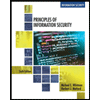1. A connection that provides a dedicated link between two devices is known as connection. a) primary b) multipoint c) point-to-point d) secondary
1. A connection that provides a dedicated link between two devices is known as connection.
a) primary
b) multipoint
c) point-to-point
d) secondary
2. To accomplish flow control, TCP uses a ___________ window protocol.
a) limited-size
b) sliding
c) fixed-size
d) none
3. A _______ is a data communication system within a building, plant, or campus, or between nearby buildings.
a) LAN
b) MAN
c) WAN
d) none of the above
4. Communication between a computer and a keyboard involves ______________ transmission.
a) simplex
b) half-duplex
c) full-duplex
d) automatic
5. An unauthorized user is a network _______ issue.
a) security
b) reliability
c) performance
d) all the above
6. 100Base-T4 uses ________ line coding.a) 8B6T
b) Manchester
c) MLT-3
d) NRZ
7. The most widely used local area network protocol is .
a) Token Bus
b) Ethernet
c) Token Ring
d) none of the above
8. 1000Base-SX, 1000Base-LX, and 1000Base-CX use _________ block coding and ________ line coding.
a) 8B/10B; NRZ
b) 4B/5B; NRZ
c) 8B/10B; MLT-3
d) 4B/5B; MLT-3
9. In Ethernet addressing, if all the bits are 1s, the address is _________.a) multicast
b) broadcast
c) unicast
d) none of the above
10. Each station on an Ethernet network has a unique _______ address imprinted on its network interface card (NIC).
a) 48-bit
b) 32-bit
c) 5-byte
d) none of the above
11. The _____ sublayer is responsible for the operation of the CSMA/CD access method and framing.
a) MAC
b) MII
c) LLC
d) ADG
12. In IPv6, the _______ field in the base header restricts the lifetime of a datagram.
a) version
b) next-header
c) hop limit
d) neighbor-advertisement
Section B
Question 1
a) Performance is inversely related to delay. When you use the Internet, which of the
following applications are more sensitive to delay, explain your answer.
i. Sending an e-mail
ii. Copying a file
iii. Surfing the Internet
b) Based on your understanding of CSMA/CD, sketch a State Diagram of the Rules that relates to it with a maximum transmission attempt of 16s. [6 marks]
⦁ i.Explain the three persistence protocols that can be used with CSMA. [4 marks]
ii. What is CSMA/CD?
iii. Explain binary exponential backoff.
⦁ Describe the signal pattern produced on the medium by the Manchester-encoded
preamble of the IEEE 802.3 MAC frame.
⦁ Explain the term handoff
[
⦁ Assume a system of 32 cells with a cell radius of 1.6 km,
a total of 32 cells, a total frequency bandwidth that supports 336 traffic channels,
and a reuse factor of N=7. If there are 32 total cells, what geographic area is covered, how many channels are there per cell, and what is the total number of concurrent calls that can be handled.
⦁ What is the difference between a virtual channel and a virtual path?
⦁ How does Fast Ethernet differ from 10BASE-T, other than the data rate?
Question 3
⦁ In the context of Ethernet, what is full-duplex operation?
⦁ List and briefly define four application areas for wireless LANs.
⦁ List and briefly define key requirements for wireless LANs.
⦁ Briefly explain two characteristics of a wired LAN that are not inherent in a wireless
LAN.
Question 4
⦁ Mention two (2) advantages that infrared communication has against microwave
b) List and briefly define important factors that can be used in evaluating or comparing
the various digital-to-digital encoding techniques.
c) What is the difference between QPSK and offset QPSK?
d) b) Five channels, each with a l00 kHz bandwidth, are to be multiplexed together. What is the minimum bandwidth of the link if there is a need for a guard band of 10kHz between the channels to prevent interference? [6 marks]
Question 5
a) Explain the difference between connectionless and connection-oriented services.
b) Break the class C address 216.21.5.0/24 into five (5) subnets
c) Why is there no need for CSMA/CD on a full-duplex Ethernet LAN?
d) What is the responsibility of the MAC sublayer.
e) List the layers of the Internet model
Step by step
Solved in 3 steps







